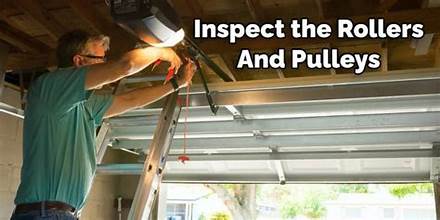
How To Fix Garage Door After Pulling Emergency Cord
When your garage door opener just won’t work, the emergency cord comes in handy. In just one pull, you can disengage your door from the opener carriage, allowing you to lift it manually. But after disconnecting your garage door, the question now is, how do you put it back?
In this quick guide, we will give you the step-by-step process of fixing a garage door after using the emergency cord. Read on and let’s start doing the quick fix!
What’s the use of emergency cord?
Before we discuss how to troubleshoot a garage door, let’s first explain what an emergency cord is and how it works.
Basically, the red rope with a handle attached to your garage door system is like a ‘reset button’. Once you pull the cord, it will disengage the garage door from the opener. This way, you can manually lift and open the garage door in case of emergencies.
This pull cord comes in handy whenever your garage door opener won’t function or there’s a power outage and you need to open the door.
Also, you can pull the cord in case of common garage door issues like stuck rollers, damaged panels, and so on. This is to ensure that the door won’t accidentally operate while you’re working on the fixes.
But after releasing the garage door with an emergency cord, you need to reconnect it back to the opener to resume its automatic functions. Below, we discussed the basic steps that you need to follow.
How to fix a garage door after pulling the emergency cord
Reengaging your garage door is very easy and only needs three steps:
Step 1. Check your sensors
First, you need to check if all your door sensors are working properly. If any of the sensors are blinking, it means that there are obstructions that you need to remove. Make sure the surroundings are clear and that there are no kids or pets in the area.
Overall, your door sensors should have a solid color before you proceed with the next step.
Step 2. Pull the cord back firmly
Next, pull the emergency release cord to bring the lever up and re-attach itself to the door opener. Make sure you pull firmly until you hear a solid click, which means that you’ve successfully reconnected the door.
However, don’t pull too hard as it could damage your garage door system or break the rope. Just a firm and quick upward pull is usually enough.
Step 3. Test your door’s operation
Lastly, try opening and closing your door to see if it’s working properly. If your door doesn’t have any damage, it should function just fine.
What if it doesn’t work?
If you’ve successfully reengaged your door but it’s not working, you will need additional troubleshooting.
First, you should check the manufacturer’s manual to see what else you may need to do. Usually, emergency cords on garage doors are built the same, but some models may have a different design.
If that doesn’t give you the solution you need, it’s best to call for a professional garage door repair in Los Angeles. This way, a technician can inspect your door and see what could be the problem.
Garage door maintenance tips
Aside from power outages, you may also need to pull the emergency cord in the event that your garage door malfunctions. To prevent such problems from happening, you should keep the following maintenance tips in mind:
- Keep the tracks clean. Make sure that your door’s rollers and tracks are clean and free of any accumulated dirt. This way, it won’t get stuck and you won’t be forced to pull the cord to do the cleaning.
- Inspect your door opener. If your door won’t open for some reason, you should check the automatic door opener first before deciding to pull the cord. In some cases, the opener isn’t working because it’s disconnected from the power source or the sensors are dirty.
- Don’t hang heavy items on the emergency cord. You should avoid tying heavy items on the emergency cord, which could cause accidental pulling.
- Test the door’s auto-reverse feature. You should also check if your door’s auto-reverse feature has the correct settings, so you won’t have to pull the cord during emergencies. Try placing an object underneath the door and closing it. See if the door reverses upon contact with the object.
- Replace the cord if it’s damaged. If your garage door’s emergency cord is already frayed or old, you should consider replacing it immediately. Don’t wait for it to break during emergencies before you get a replacement.
Conclusion
Overall, reconnecting your garage door after pulling the emergency cord is pretty straightforward. However, if you encounter other problems or the door isn’t working after re-engaging, you should seek emergency garage door repair instead.
This way, you won’t have to deal with the guesswork and you’ll have your garage door operational as soon as possible. Aside from that, professional repairs will ensure that your garage door is in tip-top shape, saving you from the hassle, especially on very busy days.



